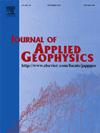Non-destructive GPR signal processing technique for thickness estimation of pavement, coal and ice layers: A review
IF 2.2
3区 地球科学
Q2 GEOSCIENCES, MULTIDISCIPLINARY
引用次数: 0
Abstract
In recent years, there has been a significant surge in the utilization of Ground Penetrating Radar (GPR) for measuring the thickness of subsurface layers, and researchers in this field have paid close attention to it. GPR enables users to achieve greater precision in evaluating the quality and condition of underground materials. The traditional methods used to measure the thickness of underground layers are time-consuming, hard to conduct and not economical. GPR is one of the most recommended non-destructive geophysical methods for routine subsurface inspections. This article is intended to highlight the application of GPR for thickness estimation of distinct materials such as, pavement, ice and coal layers and novel non-destructive testing (NDT) techniques adopted recently for thickness estimation. This article presents an overview of Ground Penetrating Radar (GPR) methodologies for layer thickness estimation, encompassing their advantages, disadvantages, and recent research findings. By synthesizing existing literature, the potential applications of GPR while addressing its inherent limitations are illustrated here. Furthermore, practical recommendations are provided to enhance the effectiveness of GPR-based layer thickness estimation techniques.
求助全文
约1分钟内获得全文
求助全文
来源期刊

Journal of Applied Geophysics
地学-地球科学综合
CiteScore
3.60
自引率
10.00%
发文量
274
审稿时长
4 months
期刊介绍:
The Journal of Applied Geophysics with its key objective of responding to pertinent and timely needs, places particular emphasis on methodological developments and innovative applications of geophysical techniques for addressing environmental, engineering, and hydrological problems. Related topical research in exploration geophysics and in soil and rock physics is also covered by the Journal of Applied Geophysics.
 求助内容:
求助内容: 应助结果提醒方式:
应助结果提醒方式:


